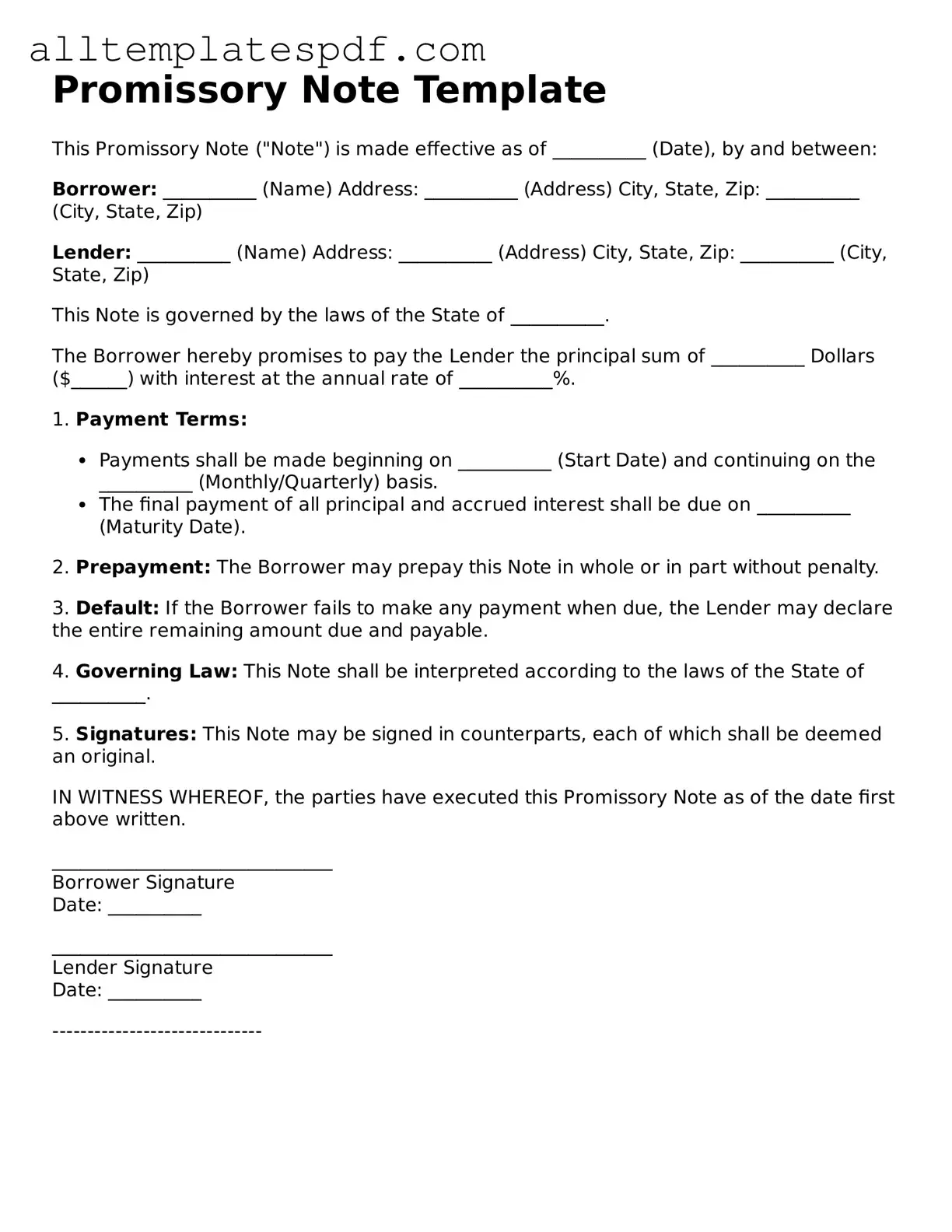Filling out a Promissory Note can be a straightforward process, but several common mistakes can lead to complications down the line. One frequent error is failing to include all necessary details. A Promissory Note should clearly state the names of both the borrower and the lender. Omitting this crucial information can create confusion and may lead to disputes about the terms of the agreement.
Another mistake often made is neglecting to specify the interest rate. Without a defined interest rate, the terms of repayment become ambiguous. This can result in misunderstandings and potential legal issues. It is essential to clearly outline whether the loan is interest-free or what the applicable interest rate is, to avoid any future conflicts.
Many individuals also forget to include the repayment schedule. A Promissory Note should detail how and when payments will be made. This includes the frequency of payments—whether they are monthly, quarterly, or otherwise—and the due dates. Without this information, borrowers may struggle to meet their obligations, and lenders may face uncertainty regarding when they can expect repayment.
In addition, some people overlook the importance of signatures. Both parties must sign the Promissory Note for it to be legally binding. A missing signature can render the document unenforceable, leaving the lender without legal recourse if the borrower defaults on the loan.
Another common oversight is failing to indicate the consequences of default. A well-drafted Promissory Note should outline what will happen if the borrower fails to make payments as agreed. This could include late fees, acceleration of the loan, or other remedies. Without these provisions, lenders may find themselves with limited options should the borrower default.
Lastly, individuals sometimes neglect to keep a copy of the signed Promissory Note. It is vital for both parties to retain a copy of the document for their records. This ensures that both the lender and borrower have access to the agreed-upon terms, which can be critical in the event of a dispute. Keeping a copy helps protect the interests of both parties involved.
